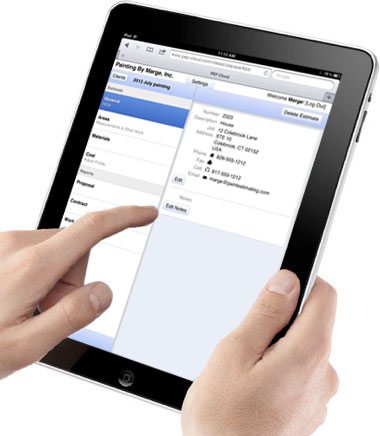My estimating was guesstimating at best.
When I first started my business I had no idea what to charge my clients for the work I was doing. I knew how to charge by the hour, but I wasn’t always sure how long it would take me to finish tasks. Eventually I had a pretty good idea of the time it would take me to do the work, but I was still guessing about how much material I needed. I found myself making repeated trips to the paint store because I ran out of supplies mid-job. Not only were these trips a waste of time, I was forced to use paint mixed at different times and hope the colors matched. This problem magnified every time I hired someone new to work with me: their completion time and material use was always different from mine.
It wasn’t until I talked to seasoned painters that I learned there were formulas for estimating. Then I joined the PDCA and really started to learn about production rates. I began to understand more about industry standards and how I could use them to estimate the time my team needed to complete a task. The next (and much larger) hurdle was to figure out how many square feet, linear feet, or individual items my team could paint in a given amount of time. This data would tell me if we were at least performing at standard PDCA production rates.
We gathered this data through field feedback.
We would measure a space to get the square footage of walls and ceilings; we would count windows; we would time ourselves painting a wall, a window, a ceiling; we would record how much paint was consumed on each piece of the job. My crew tracked this information for every job. Their feedback enhanced my ability to accurately estimate jobs. We continue to do this every day, with every job. Field feedback ensures that our production rates are accurate. It also tells me where we are strong and which areas require more training so that I can tailor company meetings to be truly productive training sessions.
Processing the Data
PEP Cloud is the tool I use to process the field-data I need to check my team’s productivity and to guarantee that I am charging my customers appropriately for each job. You can start small; the key is to stay motivated and continually track your procedures in the field to improve your estimating abilities.


So glad to be joining PEP Cloud soon Marge. I felt like I couldve written the first part of your post. Thank you for your guidance and knowledge!
I am so pleased that you find PEP Cloud a useful tool for your business. I have enjoyed working with you and have learned much in return. Working together makes us both stronger in our businesses.
I wish you much success.
Sincerely,
Marge
Marge is a great person and cares very much about our trade. Her customer support is top notch and her program is a good one. Much sucess Marge.
Thank you to all of our users for their feedback! It’s what helps us gauge the direction to go in next.
Marge,
I think you’re right on about collecting field production data as well as material consumption data. Furthermore, I’d appreciate another webinar or two just to polish up my skill with PEP cloud. I think in this era of instant gratification, the ability to input measurements and come up with a fair and accurate estimate quickly will make the difference between getting the job or not, regardless of price. Oh yes, there’s also the issue of maintaining and increasing profitablity. Keep up the good work!
Guido,
Thank you for your comment on the collecting of field and material production data, it’s important to keep our finger on the pulse of our business!
Marge
Marge, I agree with you with regards to having a software that helps you with the estimating process. It is cost effective and it creates a greater efficiency. I remember my first estimating job and how I needed something like this to get me through it.